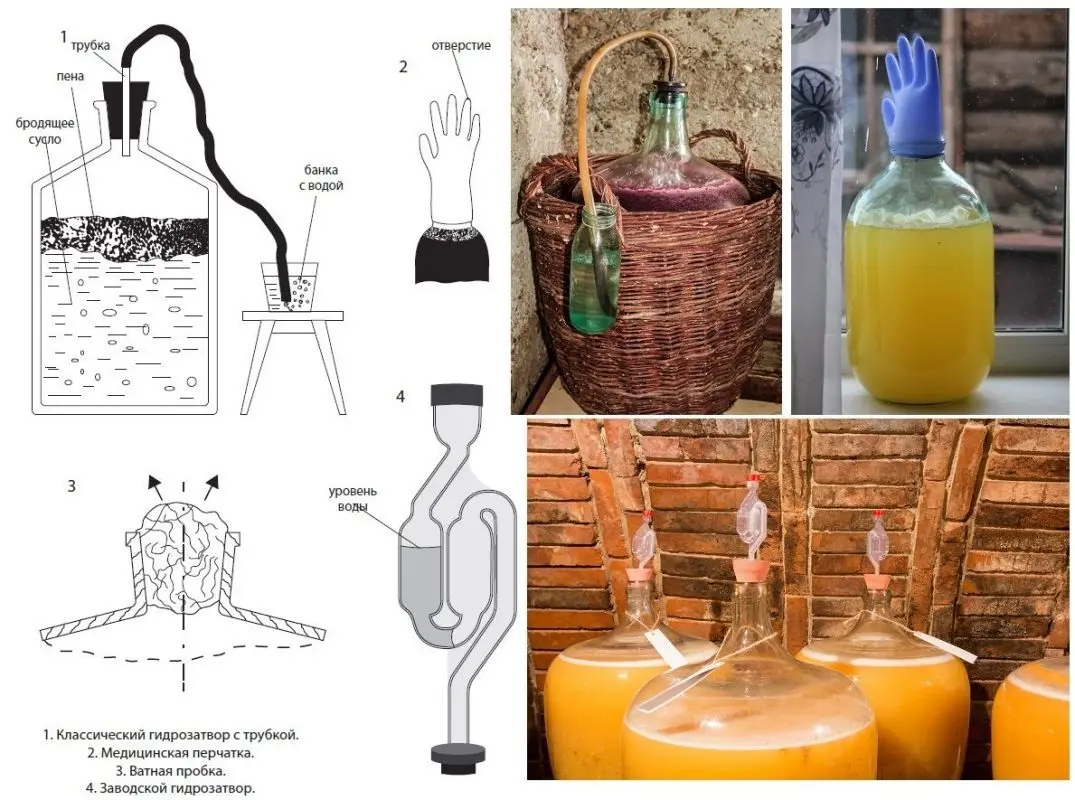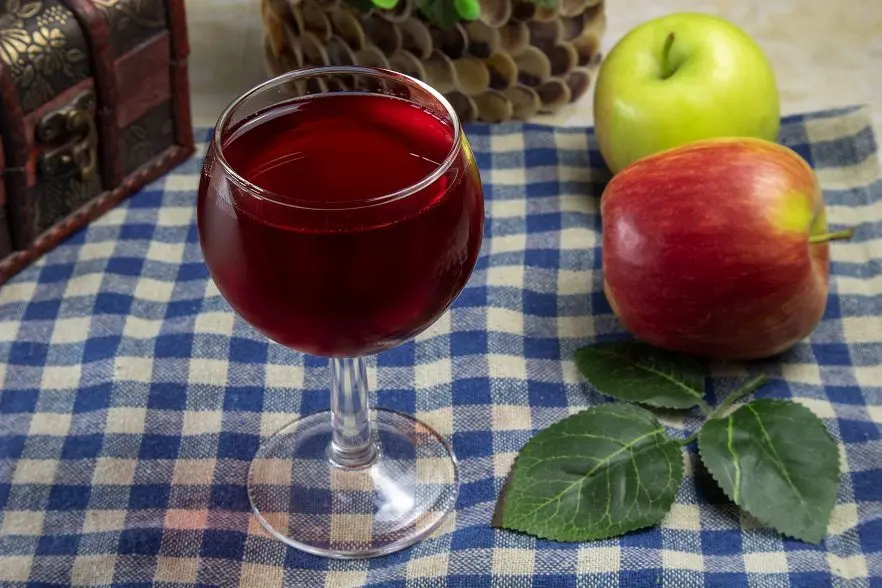Wine made from chokeberry and apples is remembered for its rich berry taste with slight notes of astringency in the aftertaste, and apple tones can be traced in the aroma. Chokeberry with apple juice create a blend close to grape wine.
For cooking, slightly overripe chokeberry berries are required. They contain enough juice, but at the same time their astringency (the concentration of tannins) is reduced to an acceptable level. It is advisable to choose hard varieties of apples, the juicier and more aromatic, the better. Water is needed to reduce the excessive astringency of chokeberry juice.
For fermentation, wine yeast is required, they are of two types: store-bought and “wild”. The best option is to use store-bought wine yeast for red wine. If they are not available, then a few days before working with the wort, you can make a starter from raisins or other berries. The most dangerous option is to rely on “wild” yeast, which is on the surface of apples and chokeberries, for this the fruits are not washed. If instead of wine yeast we take ordinary (bakery dry, pressed or alcohol), then we get not wine, but mash.
Before starting the preparation, the raw materials must be carefully sorted out so that rotten, moldy and spoiled fruits do not get into the must. You can work only with well-washed hands, and all containers and tools used should be sterilized with boiling water and wiped dry with a clean, dry cloth.
Recipe for apple and chokeberry wine
Ingredients:
- chokeberry – 4 kg;
- apples – 2 kg;
- water – 3 l;
- sugar – 2 kg + to taste;
- wine yeast or sourdough – for 10 liters of must.
Technology of preparation
1. If there is no wine yeast or sourdough, do not wash the raw materials. Remove core and pits from apples. Skip the pulp with the peel through a meat grinder or blender. Grind chokeberry berries in the same way. The second way is to squeeze the juice with a juicer, but do not throw away the pulp.
2. Mix apple and rowan puree in a container with a wide neck. In the case of using a juicer – both juice and cake. Add all the water and 50% sugar (1 kg per recipe). Stir until sugar dissolves. Add wine yeast or sourdough.
3. Cover the container with gauze to protect against insects. Then transfer to a dark place with a temperature of + 18-25 ° C and leave for 4 days. Every 8-10 hours, mix the must with a clean hand or a wooden stick, drowning the pulp in the juice – particles of berries and apple pulp that have floated to the surface so that the must does not turn sour. On the first day, foam, hissing and a characteristic sour smell should appear, which means that fermentation has begun.
4. Strain the wort through several layers of gauze, squeeze the cake to dryness (no longer needed).
5. Pour the future wine into a glass container and place it under a water seal of any design. You can use a medical glove by making a hole in one of the fingers with a needle. Fill the container to a maximum of 75% of the volume so that there is room for the next portions of sugar, foam and carbon dioxide.

6. Transfer the future wine from apples and chokeberries to a dark room (or cover with a thick cloth) with a stable temperature of +20-28 °C. Leave until the end of fermentation.
7. After 5 days, add a second portion of sugar (25% or 0,5 kg according to the recipe). To do this, drain 200-300 ml of the must from the fermentation tank, dilute sugar in it, then pour the resulting syrup back into the wine.
8. After another 5 days, repeat the procedure, adding the remaining sugar – 25% (0,5 kg) according to the technology described in the previous paragraph.
Depending on the chosen yeast and temperature, the fermentation of wine from apples and chokeberries lasts 35-60 days. The end of the process is indicated by the absence of gas from the water seal (deflated glove), a layer of loose sediment at the bottom and clarification of the wort.
9. Remove the young fermented wine from the sediment – pour it through a tube into another container, without touching the sediment at the bottom. Try the drink, if desired, additionally sweeten with sugar to taste. You can also fix the wine with vodka or alcohol 2-15% by volume. Fortified wine keeps better, but is tougher in taste.
10. Pour the drink into a holding container, preferably top-to-bottom to minimize contact with air. Close hermetically.
11. Transfer the wine for aging to a refrigerator or cellar with a temperature of +2-16 °C. Leave at least 3-5 months (preferably 7-9). If, after removal from the sediment, sugar was additionally added, then it is better to keep the first 7-10 days under a water seal in case of repeated fermentation.
12. When a sediment appears with a layer of 1-2 cm, filter the wine by pouring it through a tube into another container. Usually several filters are required. The wine is ready when there is practically no sediment, the drink can be bottled for storage and tightly closed.

If stored in a cellar or refrigerator, the shelf life of homemade wine from apples and chokeberries is up to 5 years. Fortress – 10-14% vol.









